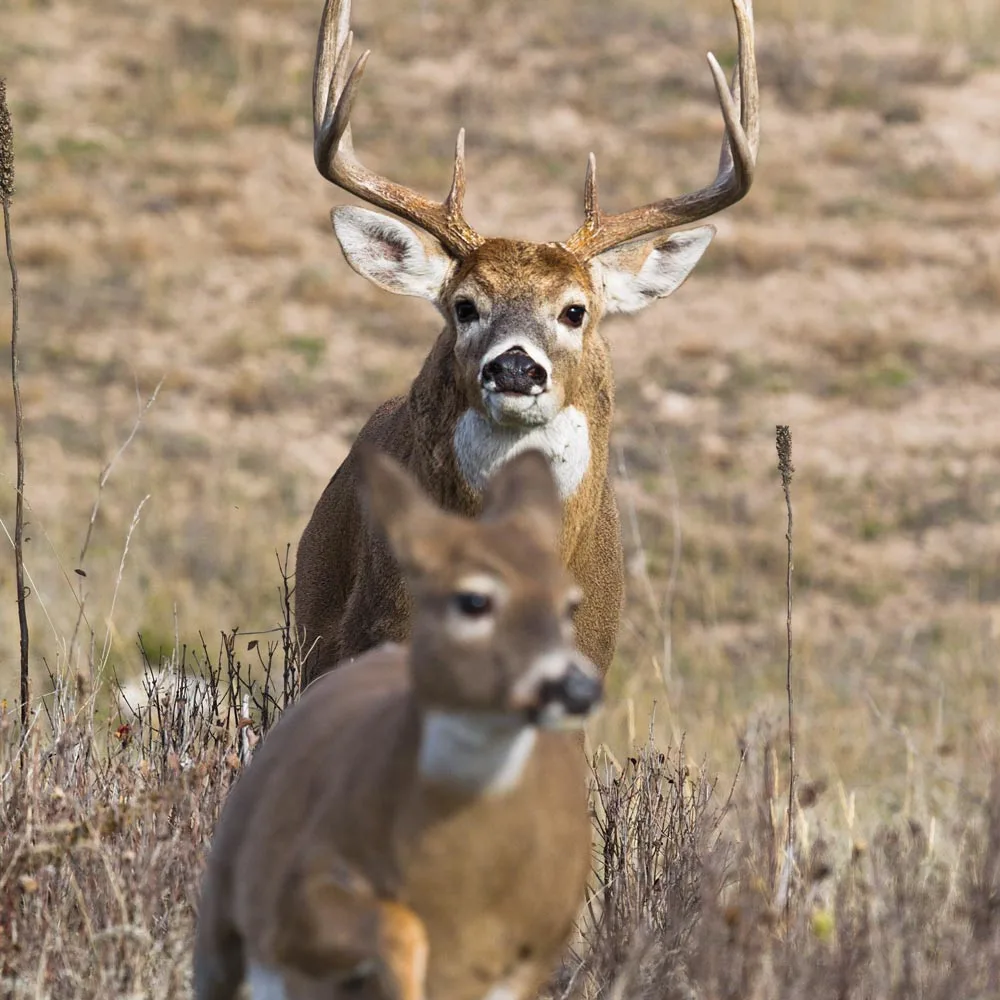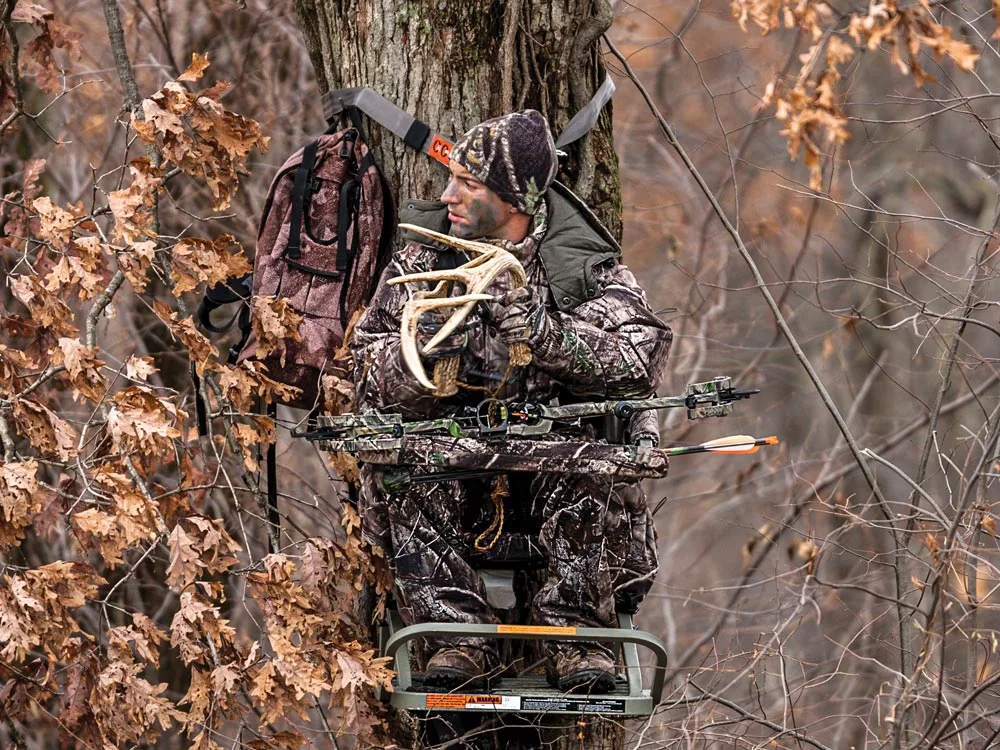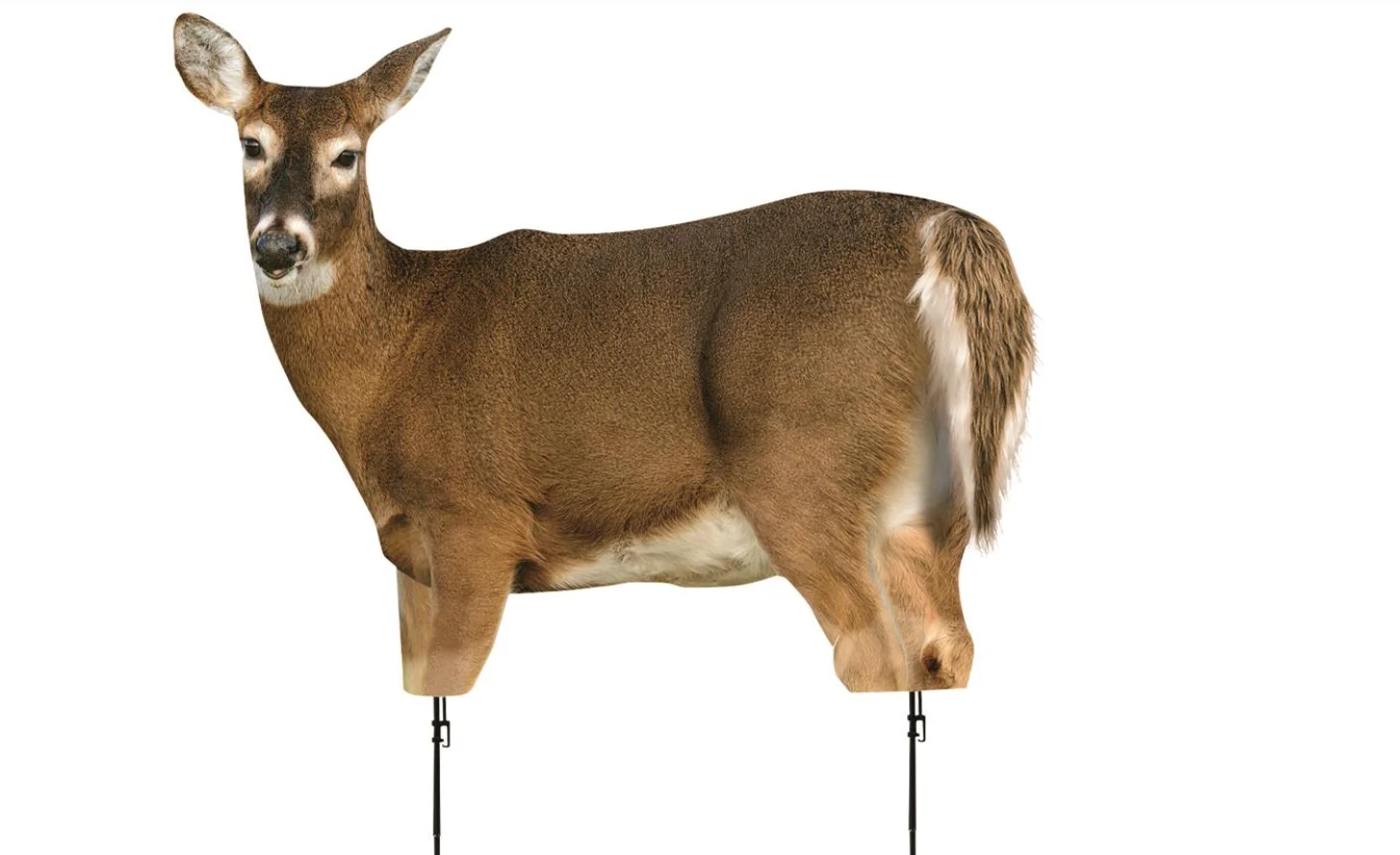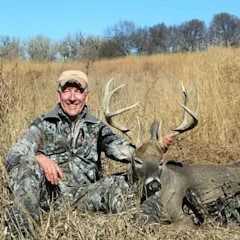I need to start with a bit of a confession: Part of the reason I chose this day is because it’s my birthday, and while I hunt at least part of this day every fall, if I dub it one of our Best Days of the Rut, well, then I pretty much have to take the whole day off and spend it in the timber. You should to the same (except to vote if you haven't already) because—all joking aside—November 5 is going to be a killer day to be in the deer woods.
Across much of whitetail range, action is heating up in a big way, with bucks riding the rutting-season wave from the seeking phase into the chasing phase. By now, a few does have already been bred and the scent of estrous is in the air. Since most bucks have not been part of this ritual yet, they are pushing the envelope, desperate for that first contact. They’re patrolling their home ranges with increased urgency, hitting scrapes (sometimes several times in a day), and investigating just about any female deer they see. Their throttle in not quite wide open, but it's very close, and the woods should be alive with buck activity this Tuesday.
Related: The Best Days of the 2024 Whitetail Rut
Rut Phase: Early Chasing

I've said it before but it bears repeating: Technically, seeking and chasing are both part of the same rut phase (you guessed it, the seeking-and-chasing phase). But from a practical standpoint, I find it useful to think of them separately. At first, bucks are seem to be mainly seeking—cruising around doe feeding and bedding areas, testing the air for signs of an estrous doe. Daylight activity definitely ramps up, but it's not exactly frantic. But at some point, a switch seems to flip, and the chase is suddenly on. That's where we are at right now.
It's one of the most exciting times to hunt the rut, and chances of a daylight encounter with a giant are excellent, as even the biggest bucks will throw caution to the wind now to run down a doe. Buck activity will only intensify from this period through peak breeding, so you don't want to miss it.
November 5 Morning Hunt Plan: Push the Bedding-Area Envelope
It’s almost always a good idea to avoid both buck and doe bedding areas prior to this point, as these safety zones are a critical element in keeping deer faithful to a core area where they feel comfortable. But now is the time to start kicking some hard-and-fast rules to the curb.
I love setting up on the edge of doe bedding areas now, as bucks will be trolling downwind of these spots, sniffing for a willing mate as they return from destination food sources in the morning. Another bonus of this setup is that does being chased by bucks—especially does not ready to breed—will often flee toward bedding areas, where they hope to elude bucks in dense cover, or even confuse their pursuers by leading them to an area where other does are present. Look for major trails leading into a known doe bedding area, hang a stand, and stay in it for as much of the morning as possible.
November 5 Evening Hunt Plan: Rattle from a No-Bust Stand

I’ve long maintained that the ultimate deer call during this phase of the rut would be one that imitates the sounds of deer running through leaves. I’ve lost track of the number of bucks that I’ve seen walking through the timber (sometimes heading right for my stand) when they suddenly pause to listen and then sprint off to when they heard the sounds of a chase. Until that call is invented, we’re stuck with rattling, grunting and snort-wheezing, which, of course, are all effective.
The only problem with rattling or calling is that most older, savvier bucks are apt to approach from the downwind side. So, the key here is to have a stand where the wind carries your scent toward an obstacle that a deer can’t (or won’t) navigate; a steep hill or bluff, a sharp creek bank, a barbwire fence—or a stand where the terrain falls off sharply enough on the downwind side that your scent with ride harmlessly above an approaching buck. My buddies and I call these no-bust stands, and they are perfect for calling during the rut.
Another way to keep a buck from circling downwind of you is to give him something else to circle downwind of. Namely, a decoy. So, whenever I'm ratting near open cover, such as a destination food source, a food plot, or the edge of a CRP field, I’ll stake out a doe decoy out in front of me to give an incoming buck something to focus on and keep him from circling on me. Try this setup for the afternoon hunt this Tuesday, and be ready for a buck to come running in.
Gear Tip: Put a "Deer" in Your Pack

While I love hunting with a decoy, I loathe hauling the heavy, noisy, bulky things, especially if I have a substantial hike to my stand or blind setup. The solution is a silhouette decoy from Montana Decoys. While not as visible as a full-body fake, these silhouette decoys are a fraction of the weight, fold up to an easy-to-transport package, and are highly realistic. As with all decoys, it’s important to use these in a relatively open area that makes it easier for an incoming buck to spot it, size things up, and respond. I’ve left full-body dekes at the truck on many a hunt, but I never hesitate to strap a Montana to my pack on a rut hunt when I know a fake deer could spell the difference between success and failure.


